An essential part of dog ownership, grooming is necessary to keep your Aussiedoodle looking and feeling their very best. If you’ve never had a dog before, though, the amount of work involved in coat care may seem a little overwhelming, but it doesn’t have to be.
While some opt for regular trips to the groomers, learning how to properly care for your pup’s coat at home could save you both time and money. Even if you still want a professional to keep them in good shape, regular brushing between sessions is essential for avoiding serious matting issues.
A good-quality brush (and comb) can really make all the difference. Here we talk you through some of the things you need to consider when picking out grooming tools. We also provide recommendations based on real owner reviews so that you can find the very best brush for your Aussiedoodle.
Our Top Doodle-Owner Reviewed Brushes (and a Comb)
For those who like to get right to the point, here are our top picks with a quick overview of what they are best for. Those who like to spend a little more time reading through the information can find our comprehensive reviews of the best brushes for Aussiedoodles below.
-
Pick #1:
Chris Christensen Big G Slicker Brush. If knots and matting are by far your biggest brushing battle, then the Big G slicker, with its super-long pins and comfort grip handle, is the grooming tool of your dreams.
-
Pick #2:
Chris Christensen Pin Brush. For more low-maintenance straight and wavy coats that shed just a little, the extra gentle CC Pin brush will keep your pup looking great when used regularly.
-
Pick #3:
Andis Pet Steel Comb. Handy for dealing with extra tricky tangles, removing dead hair and dust, and for that wonderful floofy, just-groomed coat, the Andis comb is very versatile indeed.
Aussiedoodle Coat Types: A Quick Overview
When it comes to mixed-breed dogs, you can never be 100% sure what you’re going to get. This is doubly true when the parent breeds are as incredibly different as the curly-haired Poodle and the double-coated Australian Shepherd.
While Aussiedoodles tend to lean towards the Poodle’s low-shed, single-layered coat (especially true if they are second or third generation), in truth, their hair can range from soft and sleek to curly and wiry.
If your Aussie has inherited Poodle hair, you may be jumping for joy that you won’t constantly be cleaning hair from your furniture. However, this type of coat has its own issues – and, in fact, is considered the most high maintenance of the two.

The problem with curly coats is that shedding does still happen. But, rather than falling to the floor, though, dead hair entwines itself with other hairs. These can very quickly develop into impossible-to-remove knots. For this reason, Poodle-haired dogs require daily brushing.
The other end of the scale is the super-shedding Australian Shepherd fur. This straight, short coat contains a shorter coat within that’s used for temperature regulation. This layer is often ‘blown out’ in the spring and fall.
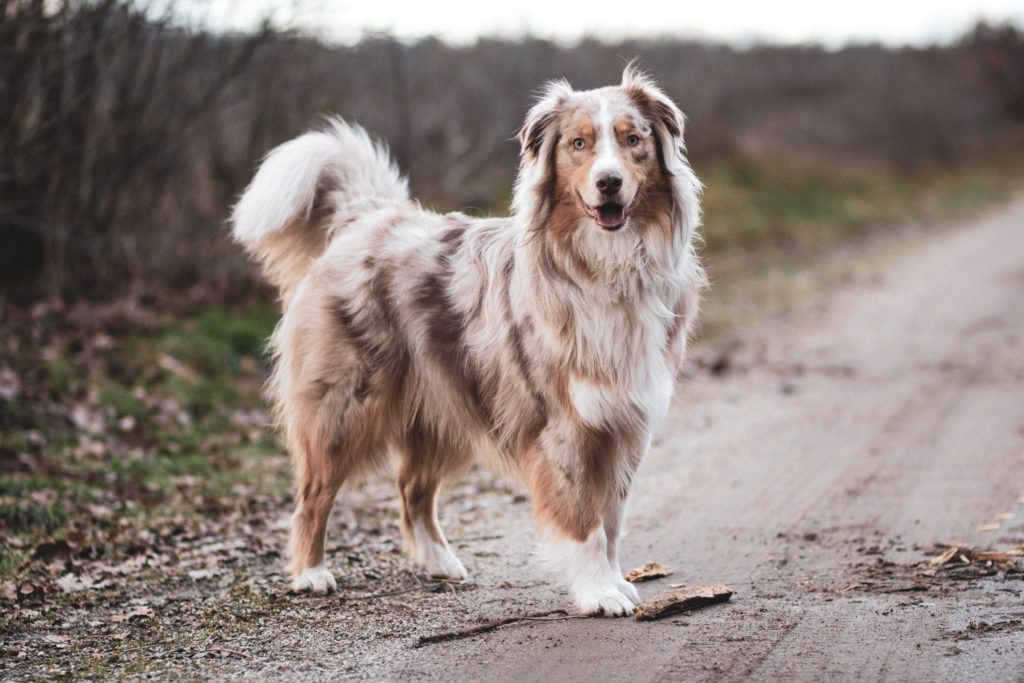
These coats tend to care for themselves, for the most part, so you will likely only need to groom your Aus-coated pup around once a week. However, you might want to up your game during shedding season to ensure your house doesn’t become hair city.
Aussiedoodles can also end up with a coat that is smack bang in the middle of the above two. This ‘fleecy,’ ‘wavy,’ ‘shaggy,’ ‘plush,’ or ‘soft’ hair is the more popular of the Doodle coats. This is not just because it gives them that trademark teddy bear look and feel, but also because it is the easiest to maintain of the three.
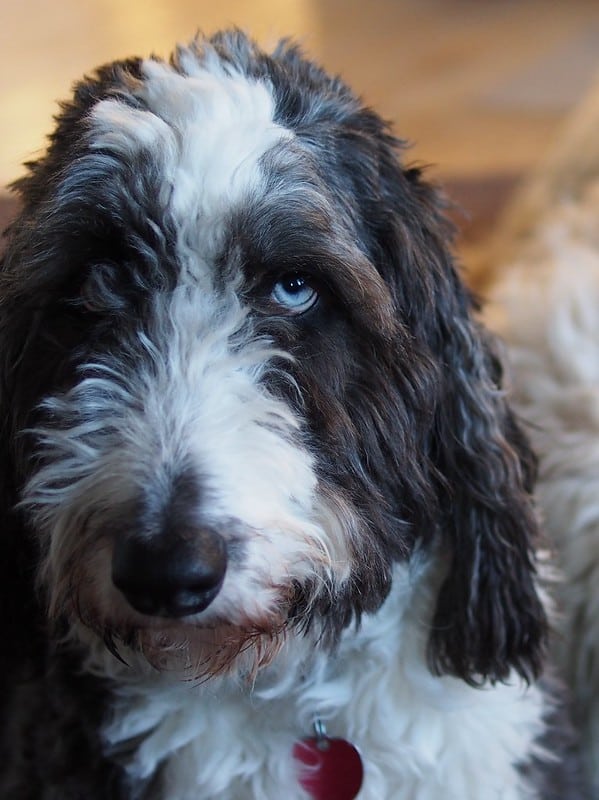
Image by F. D. Richards, licensed under CC BY 2.0.
With both shedding and tangles being minimal issues for this particular coat, a decent brush two or three times a week will be more than enough to keep your Dood in excellent condition.
Popular Aussiedoodle Brushes
There are probably as many different styles of brushes out there as there are different coat types. The reason for this is that they have been designed with varying purposes in mind.
While it might be beneficial to have a couple of different brushes in your arsenal, the main one should cater to your pup’s specific grooming needs. Here are some of the best brushes for Aussiedoodles:
Slicker Brush
The most common kind of brush out there, slickers are incredibly versatile. That’s why we have listed out slicker choice for two coat types at opposite ends of the doggy scale. These rectangular-shaped tools often have thin, tightly packed pins perfect for picking up dead and loose hair and dealing with knots and light matting.
Pin Brush
With rubber or plastic-tipped bristles that are a little more spaced out, pin brushes are great for medium to long coats that are either straight or a little wavy. Similarly to brushes designed for people, these can be used to neaten out the hair, smooth tangles, and deal with more minor knots. The space between the pins also prevents static charge that you may get from using a slicker on longer hair.
Bristle Brush
Not the best for dealing with tangles, although they can be used for dealing with light shed, bristle brushes are best on short fur or for finishing off longer hair coats. These brushes have soft, black, often nylon bristles that can remove fine dirt and distribute natural oils throughout the coat for beautiful, healthy, super shiny hair.
Rake Brush
Rake brushes do exactly what they say on the tin – they rake out loose, dead hair, dirt, and dander from deep in your pet’s coat. These brushes are usually long and thin at the end (just like a rake) with either a single or double layer of teeth that can effectively deal with shed. You will only need one of these brushes if your Aussie has inherited a double-layer fur coat.
Grooming Comb
Never to be used in place of a brush unless your hound has silky smooth, super fine hair, grooming combs are excellent pieces of kit when you need to really work through a knot or for fluffing and finishing. The very best kind of combs will feature both wide and narrowly spaced teeth, so you are able to do both jobs and more besides with this single item.
Dog Brushes: Buyer’s Guide
When picking out the best brush for your Aussiedoodle, there are a few things to keep in mind:
You want to make sure that it is constructed from durable materials that are safe around your pup (if they get it into their heads to chew them up). Often you can get a relatively good idea of a brush’s quality from the reviews it receives.
Stainless steel or coated teeth/pins reduce the risk of rusting, which could erode the brush or comb and create sharp edges. Wood or plastic handles are nicely lightweight to avoid hand or wrist strain. Just make sure to run your fingers around the sides to check for any damage to the brush’s body both before and after use.
Beyond this, features such as angled pins, a contoured brush head, and an ergonomically designed handle with a rubber grip all enhance the usability of grooming tools. Be sure to test the brush out on the underside of your arm to ensure the pin tips are smooth, and the cushion has plenty of flex before you get started.
Best Brushes for Aussiedoodles: Reviews
Best for Curly/Straight Coats
Here it is… probably one of the most well-known brushes in Doodledom. The CC Big G is famous for two things – being really, really, REALLY good at being a brush and (unfortunately) its slightly-on-the-hefty-side price tag. When people hear about the latter, they are likely to cry ‘how much?’ in high, keening tones.
However, if your Aussiedoodle has either a super curly, tangle-prone, or straight massive shed coat, then you NEED one of these miracle brushes in your life. Let me tell you why. Everything about this awesome grooming tool has been designed specifically to make it excellent at what it does – from the ultra-long, uniquely shaped pins to the ultra-wide, uniquely shaped brush head. Doodle owner reviewers frequently comment that they don’t know how they survived without the Big G.
Pros
The quality of this brush is undeniable. It’s in everything from how it fits so snugly in your hand to the way it penetrates right through to the skin.
Cons
What’s not quite as good: Some pet parents bemoan the cost but keep in mind that the quality of the brush ensures you won’t have to replace it for some time.
Best for Wavy/Fleecy Coats
With less high-maintenance coats, you can breathe a sigh of relief as you save yourself a few pennies by picking up the pin brush instead of the pricey slicker. Not to say that the brush isn’t just as good or as well made as the Big G. The long pins reach right down through your pet’s coat dealing with any problematic dirt, debris, and loose hairs. At the same time, the brush itself is sturdy and manufactured for comfort – both you and your dog’s.
While pin brushes tend to look much of a muchness, the initiated few can pretty much instantly tell the difference between a cheaply made and a professional-grade one. The CC Pin is well and truly in the latter category. Reviewers are impressed with how effortlessly it glides through their pet’s hair without any painful snagging, pulling, or tearing.
Pros
This is an excellent brush for dogs who are not keen on being groomed. It’s ever-so-gentle while still managing to get the job done.
Cons
This is not the best brush for dealing with complex knots and matting. If these crop up, then it’s best to get the comb out.
NECESSARY for All Coat Types
Andis Pet Steel Comb
Finally, no kit would be complete without Andis Pet Steel Comb (or the alternative listed below, of course). This single-sided, double-feature comb is great for tackling tangles before you get down to the serious business of grooming. It can also be used for a quick once-over after for that just groomed look that will last just as long as you can keep your Dood from rolling in the mud.

Simply made with durable stainless steel, this comb has none of the bells and whistles of other grooming tools…because it just doesn’t need them. It’s great exactly as it is – and the price is right too. 95% of Chewy buyers would recommend this product to a friend – you can’t argue with that.
Pros
The 2-in-1 deal with the teeth spacing makes this comb super versatile for removing tangles to finishing.
Cons
The lack of a handle could be problematic for some. That’s why we’ve included another good other option below.
Honorable Mentions: Other Highly Recommended Brushes/Combs
If you need to up the ante when dealing with shed, then the Safari Single Row Undercoat Rake might be the brush for you. This excellent weeding-out-dead-hair device is designed with a single row of precision tapered pins that can deal with the thickest of coats. The brush can even wipe out mats and tangles with ease.
For something a little more versatile for your long-haired angel, check out the Hartz Groomer’s Best Combo Dog Brush. This dual-action brush removes excess hair while redistributing the natural oils in your dog’s coat to restore shine and silkiness. The ergonomic handle makes it super effortless to hold and manoeuver, even for long periods.
A super alternative to the Andis comb (but with an easy-grip handle) is the Li’l Pals Double-Sided Dog Comb. It features 32 closely-spaced stainless steel teeth on one side and 17 stainless steel teeth on the other. This makes it perfect for dealing with knots and tangles as well as good for more general grooming, such as around the face and feet.
Tips for Grooming Your Aussiedoodle
Before you start brushing out your pup, check them over for any signs of injuries – any lumps, bumps, patches of hair loss, or anything else that shouldn’t be there. Run your fingers through their coat – right down to the skin – to find large patches of knots or matting that will require targeted brushing or combing or even a little spritz of doggy detangler.
When brushing, begin at the feet and work in sections, rather than using long strokes. Part the hair or fur and ensure the brush (whether slicker, pin or rake) goes right through down to the skin.
Once you are sure there are no more knots lurking, switch to a comb to give their face and legs a going over. You can also use the comb on their main coat to fluff it up or help it to lay straight – whichever you prefer.
Pay careful attention to areas such as where the collar or harness sits, around the ears, and down by the tail – tangles can quickly accumulate here.
The grooming routine should also include nail trims, expressing anal glands, teeth brushing, ear cleaning, removing tear stains, and trimming overly long hair around the face, paws, and back end. While these need doing less frequently, they are still crucial for keeping your Doodle in tip, top condition.
Aim to make grooming a special event between you and your dog. The more you do it, the easier it will become for both of you – this is doubly true if your pup finds it an entirely positive experience. Having the right tools will help with this, so too will plenty of pets, cuddles, and even some special treats.
Caring for a Aussiedoodle: Frequently Asked Questions
How do you keep Aussiedoodle hair from matting?
The best way to keep an Aussie’s hair from matting is through regular brushing. If you can catch tangles early on, they will be much easier to remove. Never ever bath your dog with knots. This will tighten them to the point where you will likely have to cut them out – not a good look!
How often should you brush an Aussiedoodle?
The frequency of brushing for your Aussie very much depends on the type of coat they have. Straight and wavy-haired pups require less frequent brushing than their curly-coated counterparts. Once a week should be sufficient for the former, whereas, for the latter, three or four times a week works best…or daily if you can swing it.
Can you over-brush an Aussiedoodle?
With the right tools even daily grooming will not impact your dog. Before using any brush on your pup’s sensitive skin, rub it against the sensitive part of your arm to check for scratchy pins or edges. Keep a close eye on their skin for any signs of irritation or injury while using the brush.
Should I shave my Aussiedoodle?
Shaving is a popular alternative to trimming for helping to manage your pet’s hair. After all, a shorter tangle-prone coat is easier to look after than a longer tangle-prone one. Some people don’t like the way it looks on their pup, though, and that’s fine too. As long as you keep on top of coat care, it’s not essential.
Aussiedoodles are gorgeous-looking dogs, but they do require regular brushing to make sure they stay that way. While grooming may sometimes seem like a bit of a nuisance if you’re busy, doing it often will mean that you spend less overall time on it, and the right tools will help no end. Hopefully, the information given in this article will go some way towards helping you to find the best brush for your Aussiedoodle.
Learn How to Stop Shavedowns For Good & Keep Matting At Bay!
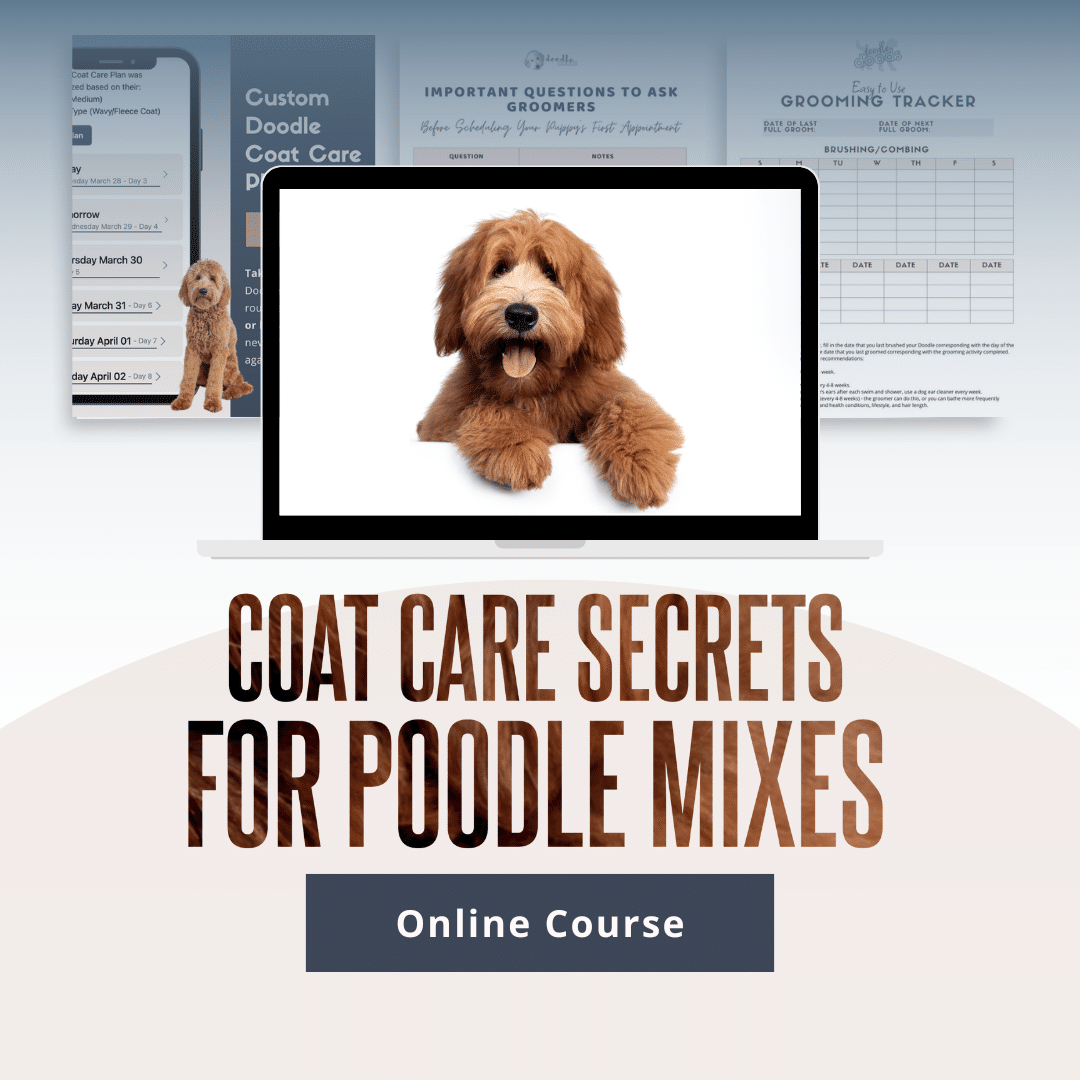
Discover the PROPER Doodle coat care routine that gets your pup to cooperate…helps you nip tangles in the bud…and gets groomers to do exactly what you want.
Plus, get $520 worth of Bonus Materials for FREE, including:- Doodle Parenthood Community and Support Group ($190 value)
- Custom Doodle Coat Care Plan Lifetime Access ($75 value)
- Easy to Use Doodle Grooming Tracker ($20 value)
- And MORE!
The information on this page is for informational purposes only. It is not intended to be a substitute for professional groomer advice. Always seek the advice of your groomer, veterinarian, or other qualified animal health provider with any questions you may have.

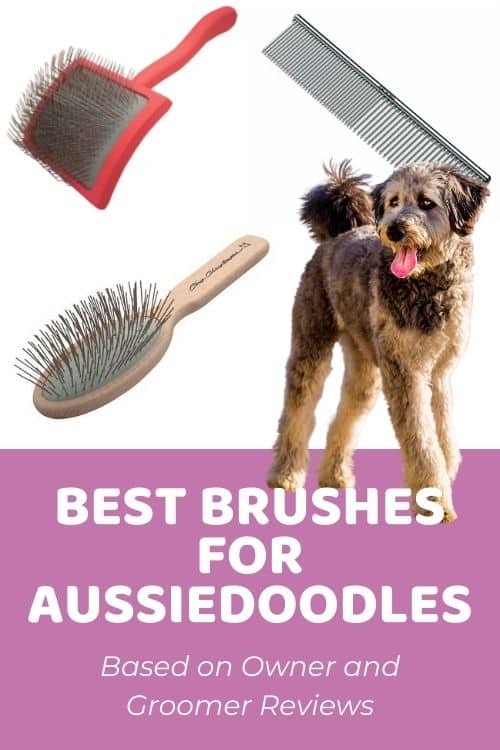
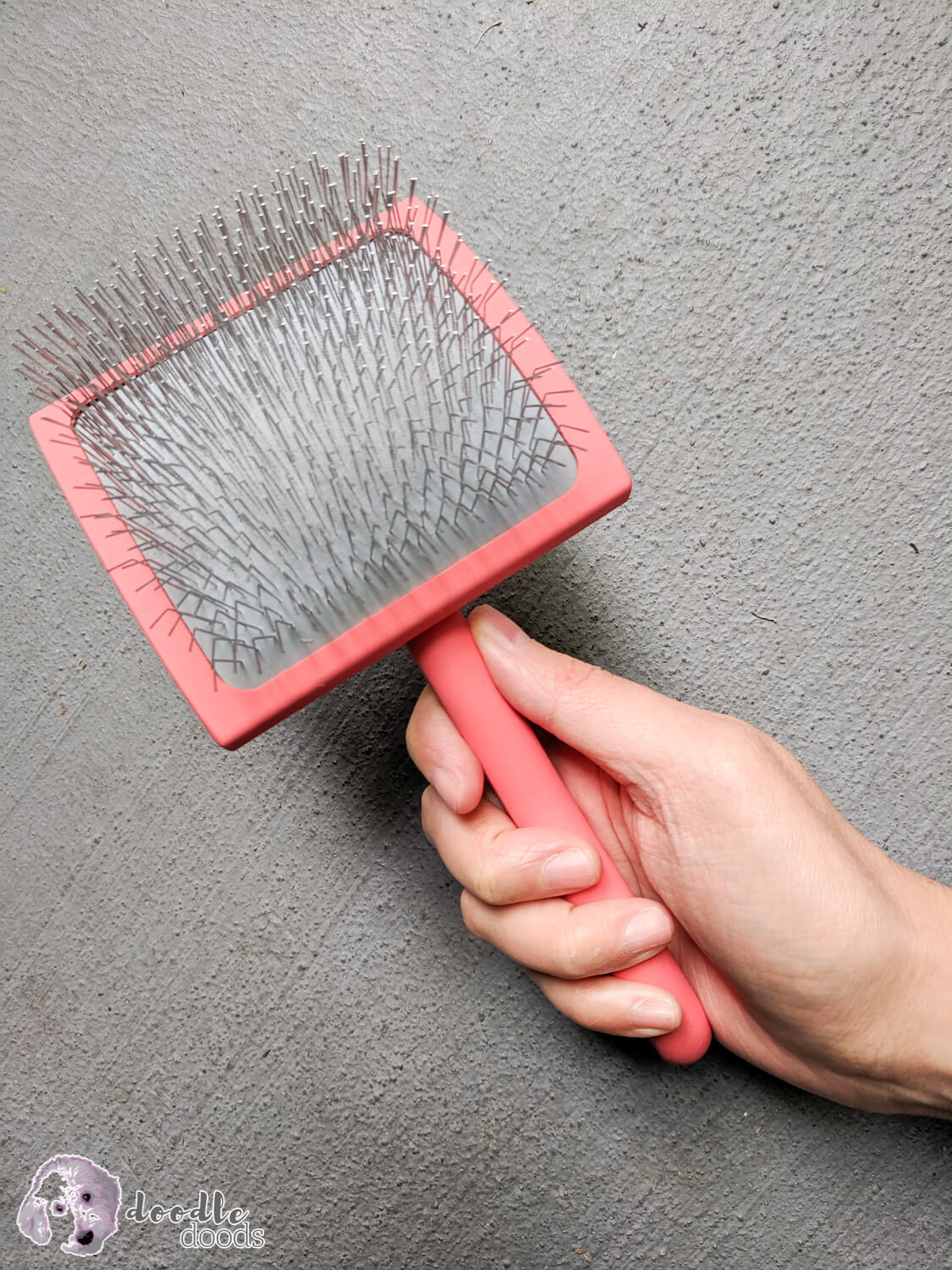

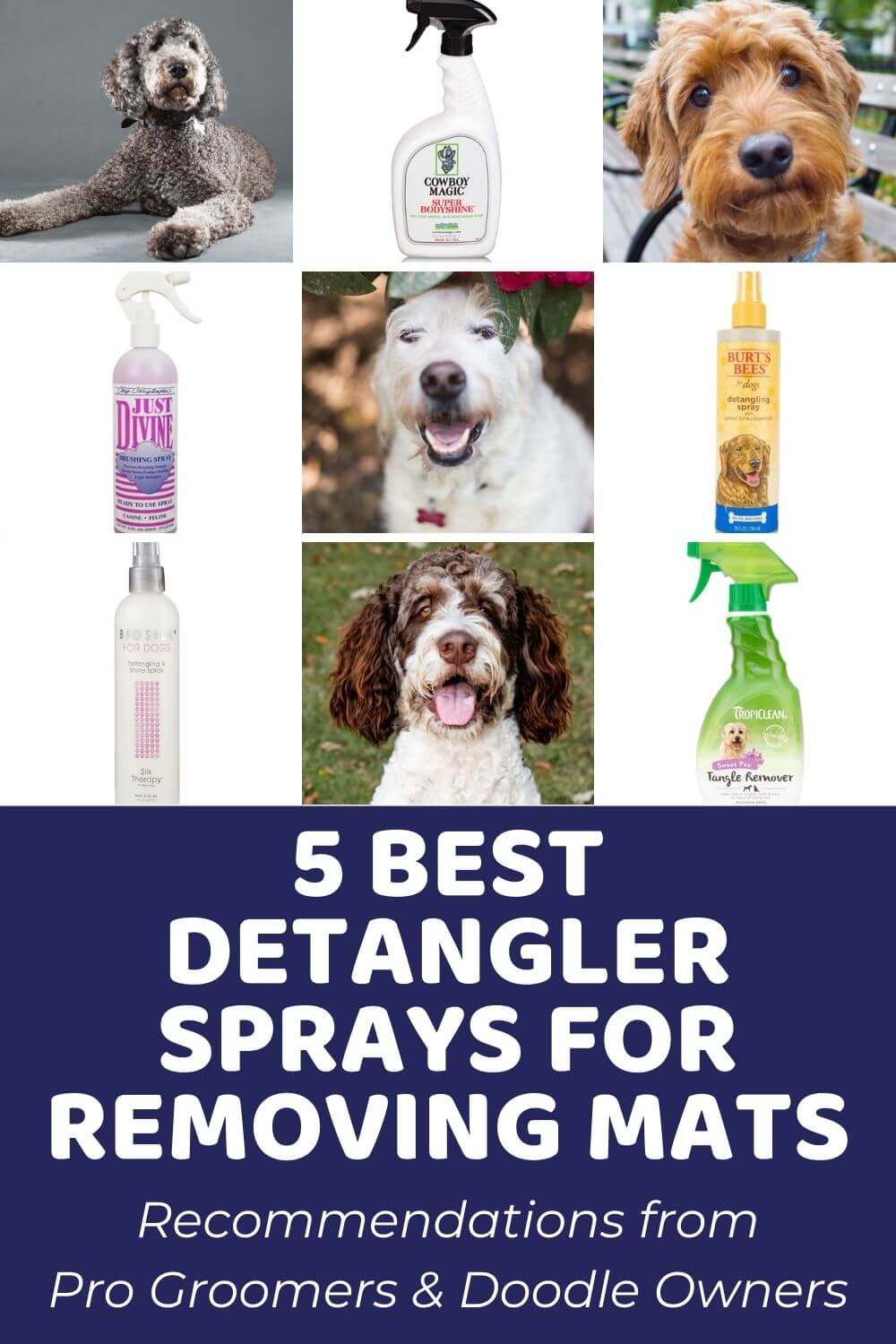
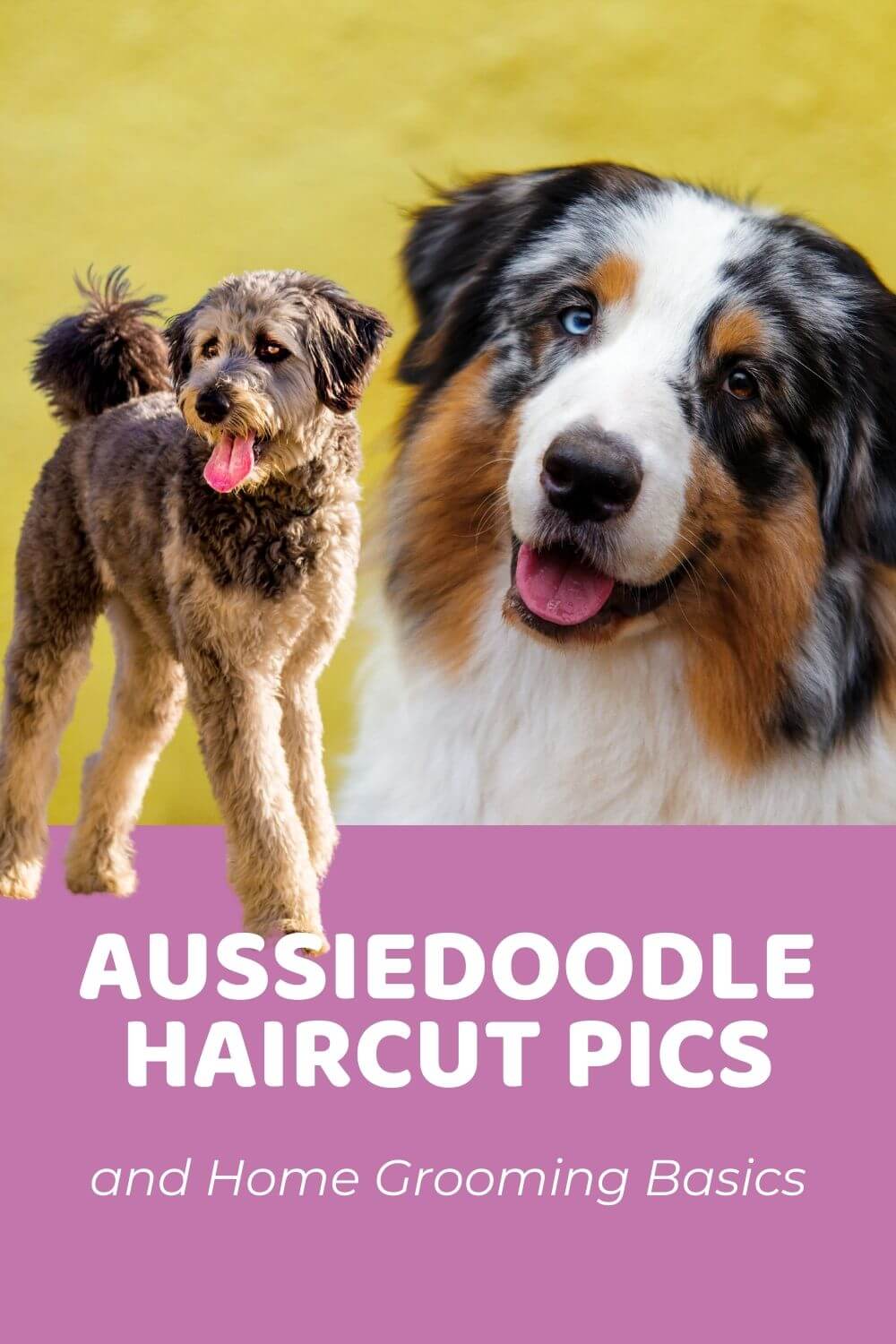

The info provided for Aussiedoodles was very eye opening and enlightening. Thanks for doing all the research so we didn’t have to and you kept us from going through the trial and error process.
December 25, 2021 at 4:44 pm